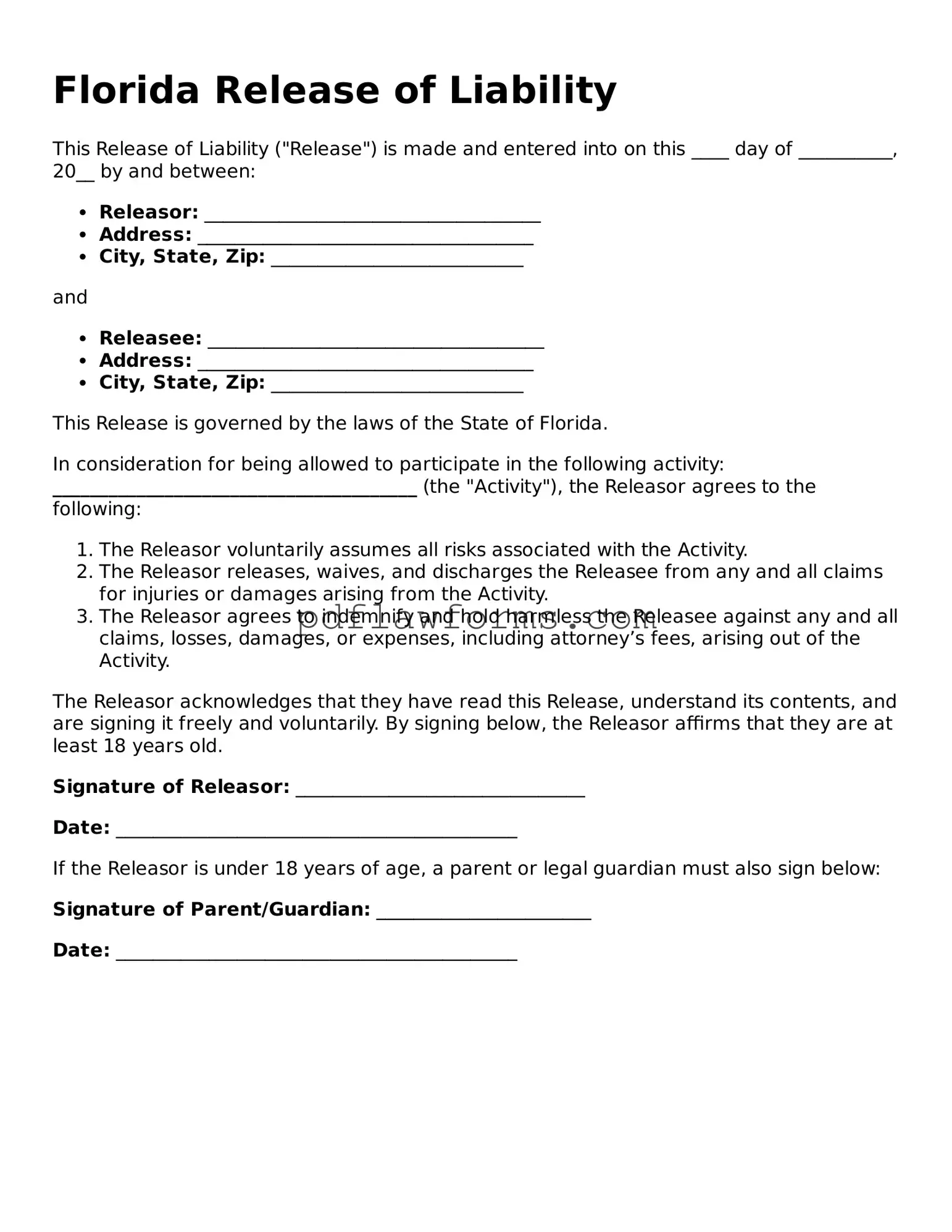Filling out a Florida Release of Liability form can seem straightforward, but many individuals make common mistakes that can lead to confusion or even invalidate the document. Understanding these pitfalls can help ensure that your form is completed correctly and serves its intended purpose.
One frequent mistake is failing to provide all required information. The form typically asks for specific details, such as names, addresses, and the nature of the activity involved. Omitting even one piece of information can lead to delays or complications in the event of a claim.
Another common error is not reading the entire form carefully. Many people skim through the document, missing critical clauses or conditions. This can result in misunderstandings about what rights are being waived or what responsibilities are being assumed. Taking the time to read and comprehend every section is essential.
Some individuals forget to sign and date the form. A signature is a critical component that indicates your agreement to the terms outlined. Without it, the document may not hold up in court, leaving you unprotected in the event of an incident.
Inaccurate dates are another mistake that can lead to issues. It's important to ensure that the date you sign the form matches the date of the activity. Discrepancies can raise questions about the validity of the release, potentially complicating any future claims.
People often overlook the need for witnesses or notarization. Depending on the situation, a witness may be required to sign the form as well. Notarizing the document can also add an extra layer of legitimacy, which is particularly important in more serious circumstances.
Another mistake is using vague language when describing the activity or risks involved. Clear and specific descriptions help ensure that everyone understands what they are agreeing to. This clarity can prevent disputes later on, should a claim arise.
Finally, individuals sometimes fail to keep a copy of the signed form. After completing the document, it’s crucial to retain a copy for your records. This ensures you have proof of the agreement and can reference it if necessary. Keeping organized records can save a lot of headaches down the line.
